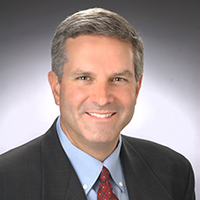Strategic Mindset: An Essential for All Leaders

As the founder of Starbucks, Howard Schultz set out to do more than pour a good cup of coffee and put stores at every major intersection in the world. He wanted to create a company that prioritized two things. First, he wanted to bring people together (over a cup of coffee). Second, and most importantly, he wanted the employee experience to be Starbucks’ highest corporate value and strategic differentiator. He believed all the other business metrics and goals would follow when those two things were done extraordinarily well. And years later, the results speak for themselves.
Schultz had a compelling vision that people got behind. He inspired, motivated and equipped them to endure, pushing through distasteful details to achieve the impossible. Schultz is an exemplar of a strategic mindset.
Essential for Every Leader
If you believe strategic thinking is only for founders of Fortune 500 companies or senior executives, think again. Every level of every company and organization needs people who think strategically. This attribute may not be on job descriptions, but it will inevitably make you more impactful. Strategic thinkers find ways to produce extraordinary results that are aligned with the organization’s highest priorities and desired outcomes. For that reason, strategic thinkers are often promoted and given greater responsibility.
All About Priorities
Strategy, put simply, comes down to what is most important to you, your team, and your bank. The only way leaders can decide what actions to take—or not take—is to get clear on their most important priority. Many well-intentioned leaders make everything a priority, or perhaps even have three to five “most important” priorities, hoping something will stick. But inevitably, conflicting priorities eventually clash with one another and water down overall effectiveness.
- Coaching Questions: What is the number one priority of your bank, your department or team, and your individual role? Do you see alignment within those priorities? What is needed to further align efforts and resources to work on those priorities?
Hard Choices
Strategic thinking requires hard choices about which actions to take and how to deploy bank resources. Often those decisions require that leaders identify what to stop doing to fully support the number one priority. Admittedly, that’s hard to do. There are always trade-offs that must be considered. That’s why identifying a top priority is so essential. It provides a lens for making the best-informed strategic decisions.
Shifting from Reactionary to Strategic
Many leaders get consumed with the urgent day-to-day tasks of running their operation or carrying out their responsibilities and miss the bigger picture. They get pulled in multiple directions and see their job in a transactional manner, simply trying to get the next project completed, without realizing they are creating increasingly more work for themselves but getting fewer results.
Look for Trends
Strategic leaders must understand their industry, including trends and the major factors impacting their enterprise, operation, and area of responsibility. Specifically, they begin noticing issues that keep coming up frequently across their organization, such as information bottlenecks and confusion caused by unclear communication. They realize these common obstacles must be addressed at a strategic level across their bank’s culture, communication, and training processes.
Connect with Others and Get Curious
Strategic leaders proactively connect with peers, both inside their bank and across the industry. They begin asking open-ended questions about root causes and how situations are interrelated with key processes, culture, technical capabilities and cross-functional effectiveness.
New Opportunities Emerge
By working collaboratively and becoming curious, strategic leaders look at situations from different points of view and naturally begin seeing new possibilities, more creative approaches, and better aligned outcomes.
Asking the Right Questions
Before beginning new initiatives or tackling problems, strategic leaders pose tough questions to their senior leaders, their colleagues, and even themselves. Questions like these are a good place to start:
- What does success look like in three months, six months, one year, three years?
- How do our goals/key objectives support the bank’s broader mission?
- What are we committing time and resources to that doesn’t support our highest priorities?
- What could negatively impact the outcome?
- What are the early signs of success/failure? What do key stakeholders need to understand to ensure successful outcomes?
Change Your Daily Habits
Strategic leaders don’t allow themselves to get bogged down. They intentionally build daily habits that support their strategic approach and only invest time in their highest priorities.
- Coaching Question: How can you set aside more time to evaluate priorities and think strategically?
Developing a strategic mindset might be uncomfortable at first. But the payoff is priceless. Growth in your strategic mindset will maximize your leadership potential and will exponentially impact your bank’s long-term success.
This Month's Guest Writer
Michael A. Evans
President & CEO
CHORUS, Inc.